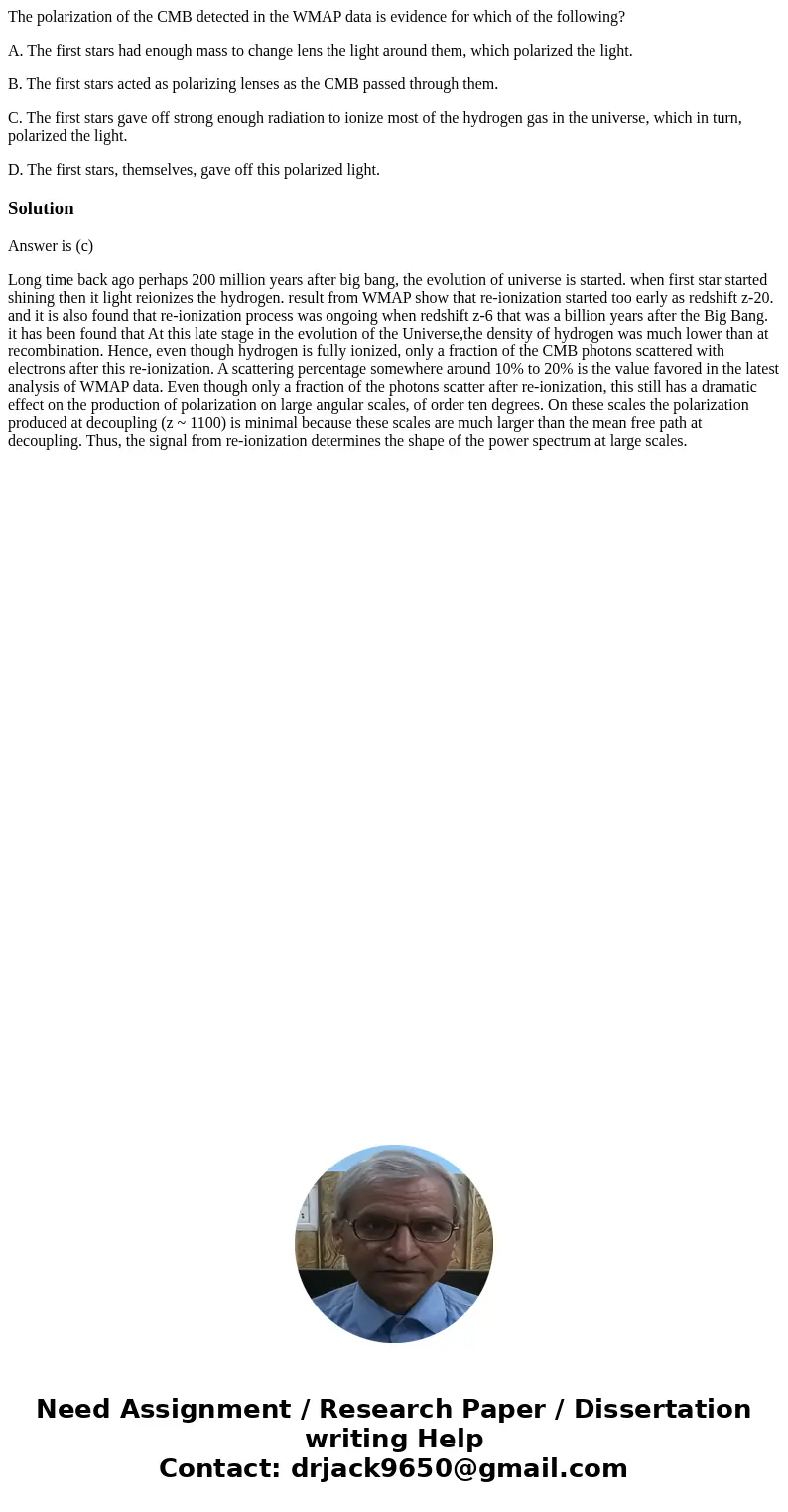The polarization of the CMB detected in the WMAP data is evi
The polarization of the CMB detected in the WMAP data is evidence for which of the following?
A. The first stars had enough mass to change lens the light around them, which polarized the light.
B. The first stars acted as polarizing lenses as the CMB passed through them.
C. The first stars gave off strong enough radiation to ionize most of the hydrogen gas in the universe, which in turn, polarized the light.
D. The first stars, themselves, gave off this polarized light.
Solution
Answer is (c)
Long time back ago perhaps 200 million years after big bang, the evolution of universe is started. when first star started shining then it light reionizes the hydrogen. result from WMAP show that re-ionization started too early as redshift z-20. and it is also found that re-ionization process was ongoing when redshift z-6 that was a billion years after the Big Bang. it has been found that At this late stage in the evolution of the Universe,the density of hydrogen was much lower than at recombination. Hence, even though hydrogen is fully ionized, only a fraction of the CMB photons scattered with electrons after this re-ionization. A scattering percentage somewhere around 10% to 20% is the value favored in the latest analysis of WMAP data. Even though only a fraction of the photons scatter after re-ionization, this still has a dramatic effect on the production of polarization on large angular scales, of order ten degrees. On these scales the polarization produced at decoupling (z ~ 1100) is minimal because these scales are much larger than the mean free path at decoupling. Thus, the signal from re-ionization determines the shape of the power spectrum at large scales.

 Homework Sourse
Homework Sourse